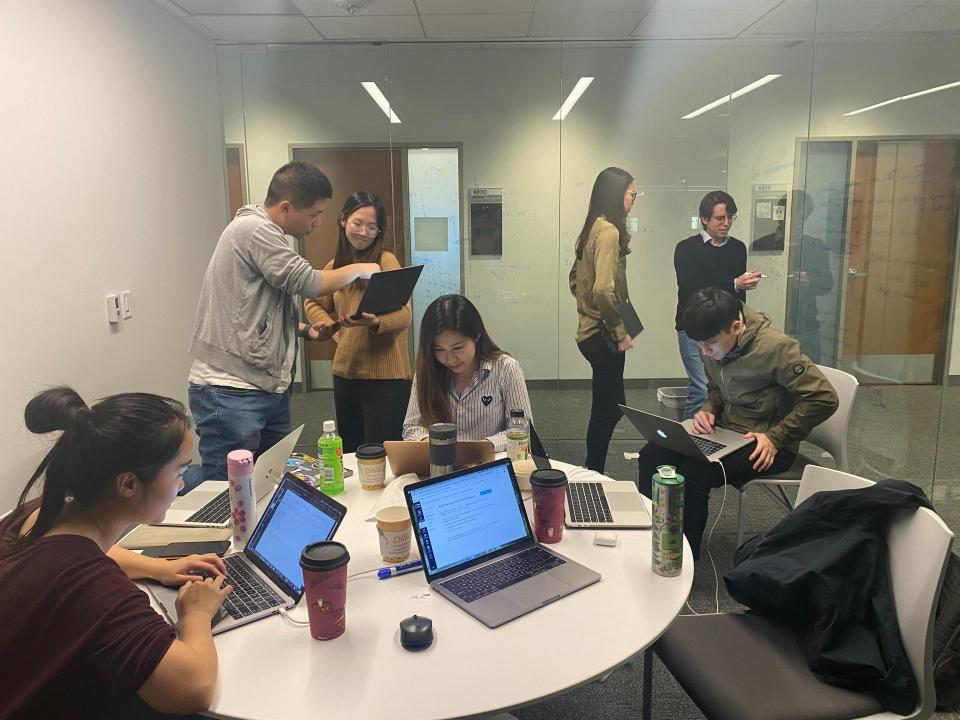Diversity Drives Team Productivity in Analytics
Global “melting pots” foster innovation in M.S. in Business Analytics projects

During his practicum project experience, MSBA student Breno Albuquerque discovered the power and importance of diversity in teamwork.
Given the events of the past week, I cannot think of a more appropriate moment to ponder about the role diversity plays not only in our personal lives, but also in the context of business and the analytics profession.
It surprised me that having worked for eight years as analytics manager for the Brazilian Development Bank (BNDES), I had never considered diversity as an important aspect of team productivity.
I always considered that such configurations could reduce noise in communication and facilitate the craft of a homogeneous collective mindset towards goals. That, I though, would ultimately lead to superior and faster results. Particularly in a business analytics (BAx) context, where quantitative language is imperative, I believed that uniform profiles were the key to harmonic work and to teams that are more productive.

In every opportunity I had to hire new team members, I opted for people I trusted, had the necessary skills and shared the same mindset about analytics. Consequently, the teams I led tended to be in many dimensions uniform.
Nevertheless, my perception about BAx teams composition has remarkably changed since I joined the UC Davis Master of Science in Data Analytics (MSBA) Program.
I realized that the set of competencies required to conduct business analysis was larger than I previously considered. The need to understand businesses models, clients’ requirements and data generation process urges analytics teams to be more empathic, creative and aware of its own bias.
Productivity on Practicum Project
However, it was when I started participating on our MSBA practicum project that I realized the true importance of diversity in analytics team. For the yearlong client-consulting project, I joined the most diverse team I have ever worked with. Even more, in almost every single individual aspect—age, gender, ethnicity, values, technical backgrounds, working experiences—I am in the minority.
From this experience, I have noticed how diversity can impact team productivity in positive ways:
First, it is clear that teams that are more heterogeneous make decisions that are more rational. In decision-making, it is important to acknowledge this for critical possible future implications of choices since it helps in comparing outcomes from available options.
In addition, as James Stone and David Myers observe, generally groups tend to be blind about balanced choices and make decisions towards extreme options (too conservative or too risky). Because heterogeneous teams have broader perspectives, they are more inclined to detect potential issues, anticipate choices implications and opt for less biased and polarized decisions.
I also noted that decision makings during the practicum project meetings usually take longer than similar decisions makings in less diverse groups. The reason is that normally there are more options for the group to take into consideration. Pondering those options and selecting one course of action is more time consuming. However, I also realized that such decisions by our practicum team tend to be more fact-oriented and balanced.
Second, diversity is the building block of creativity. Collaborating with people that share different histories, values, skills and cultures is fertile ground for cultivating innovative ideas. The process of how diversity fosters innovation is better summarized by Rocío Lorenzo in her 2017 TEDx talk.

During the practicum project, we made a decision to step back and design a business diagram based on the suggestion by a fellow classmate with a non-analytic background. She advocated for the potential benefits of having a better understating of the whole business model. Later, that decision resulted in the team designing and proposing metrics that were not only more problem-adherent but also brought new insights to our client company.
Diversity has many benefits, but it also carries a few disadvantages. For instance, language barriers in multicultural teams may increase noise in communication. In our project practicum, our team is all non-native English speakers. We spend a lot of time trying to avoid misinterpretations. Different attitudes regarding conflict resolution is another challenge. While some cultures are more apt to more openly and publicly discuss problems, others prefer dealing with conflicts privately.
In a Harvard Business Review article, Managing Multicultural Teams by Jeanne Brett, Kristin Behfar, and Mary C. Kern, the authors diagnosed commons problems in multicultural teams and provided suggestions on how to handle them. It serves as a helpful guideline for addressing most frequent issues. In addition, it shows that it is possible to create solutions capable of reducing attrition caused by diversity.
Our practicum team embraced diversity in many ways:
- Recognizing and understanding cultural differences
- Respecting different point of views
- Incentivizing general participation
- Explicitly stating rules
- Respectfully making counter-arguments
- Consulting external advisors about decisions and strategies

These practices allowed our team to make diversity a competitive advantage, minimizing the downsides.
In addition to quantitative competencies, BAx professionals must be empathetic, creative and aware of their bias. A diverse team may reinforce these abilities by exercising open-mindedness, serving as a creativity playground and safe sparring field for decision-making. Nevertheless, to harvest these benefits it is important to recognize the differences, to design processes centered in conflict reduction and to promote a culture of empathy.
Early in my career, I was right in assuming a more homogeneous team would lead to less disagreement. However, I was completely wrong about the fact that absence of conflict leads to increases in efficiency.
The secret of a truly productive analytic team lies in its ability to extract the best out of diversity and its competency to design proper processes to handle possible conflicts.